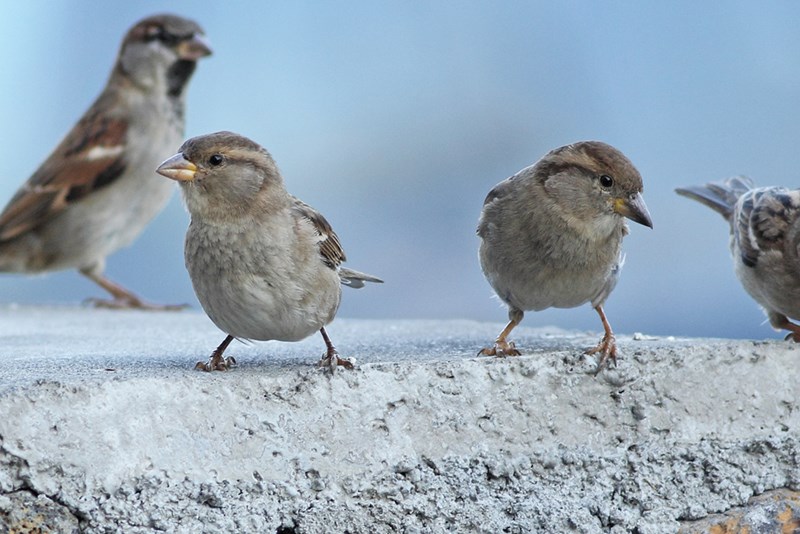Vancouver is playing host to two significant bird events this summer — the 27th International Ornithological Congress, which takes place every four years and attracts ornithologists (bird scientists) from around the world, and the inaugural Vancouver International Bird Festival.
Each week leading up to the festival and congress Aug. 19-26, we’ll highlight a different bird. British Columbia is home to 573 species of birds and many can be found in and around Vancouver.
Bird of the Week
House Sparrow
Species Name
Passer domesticus
Appearance
Length: 14-18 centimetres
Wingspan: 19-25 centimetres
Weight: 24-30 grams
A small, compact songbird with a large, round head, short wings, a short neck, short legs and a short, strong, conical-shaped bill. Males are larger during the winter and females are larger during the breeding season.
The male is mostly grey with patterned brown, black and grey wings and a brown-grey lower back, tail and rump. They have a dark grey crown, a chestnut area behind the eye and white cheeks. They have a black chin and throat and a small black eye mask with a single white dot behind each eye. The bill and eyes are black. In non-breeding plumage the male becomes much duller.
The female is significantly duller year-round, in less contrasting shades of brown and much less patterning. She has a light grey-brown underside, streaked buff and brown wings and back and a pale supercilium, a plumage feature found on the heads of some bird species that looks like a stripe and usually runs from the baser of the beak above its eye to the rear of the head. Juveniles are similar to the adult female.
Habitat/Behaviour
The house sparrow can be found on every continent, except Antarctica, and is the most widely distributed of any wild bird. It typically chooses habitats within close proximity of human populations.
These birds are largely granivorous, foraging on the ground for the seeds of grain and weeds, but will also eat some insects and other foods especially during breeding season. They are a common sight at bird feeders and on the patios of restaurants and cafes. House sparrows do need to consume some grit to help with digestion and will eat bits of egg shell, mollusc shell, stones or rough grains.
Breeding
They are monogamous for life and nest in cavities or crevices. They produce four to five whitish eggs with brown spots and will have between one and four broods.
More about birds:
- Get the Vancouver bird checklist online or on your iPhone
- 10 simple birding tips
- Check out more on the 27th International Ornithological Congress and all the events planned for the inaugural Vancouver International Bird Festival
Source: Vancouver International Bird Festival



